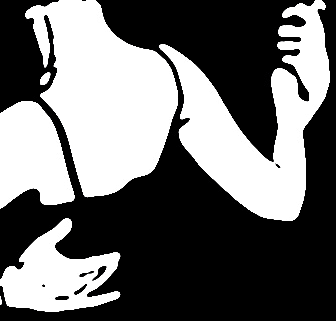
Taken at 19:45 hs, 31 December 2008.
It struck me today standing outside this large doorway. Exactly to the day, a year ago.
It brought me back to that faraway moment, in the dark warm quiet indoors safe from the random burst of firecrackers out on the streets of midtown, roving bands of people celebrating their farewells to yet another ano que se fue, while calling out to the hours newly arrived. Inside, time passed immaterial. Silently oblivious to everything as the world has condensed down to 4 walls and the high ceiling which contained us.
The place behind this doorway where we first met and spent our happy moments is gone now. For a few months now, it has been shut, empty. All the people have left. A handwritten for rental sign is displayed outside the top windows.
Caught up in a moment of lightheadedness from my cigarrette smoke, it struck me suddenly standing there looking at the doorway across the street. In Buenos Aires, time stands still. In stark contrast to the manic heartbeats of the city, the daytime streets blocked with cars and buses spewing summer smog, its tecnicolour nights blurry with movements of passerbys and drenched with Piazzolla's bandoneon calling to the city and the Obelisk.
There is a saying in Argentina everything changes. Having lived and breathed the air, I can taste it, I can feel this saying deep in my bones. Everything changes, non-stop. In such a world of molecular inconstancy, one can only live in the present moment. It doesn't give you a choice. Like my other realisations of this city, I wasn't searching for it in some academic cross-examination. The revelation came from having soaked in the atmosphere, seeing, feeling the same vibrations of fate like the rest of the inhabitants of the city. Perhaps I was plugged into the city's lifeblood through you, my porteno now gone away.
6 years of living in the another southern land in the great continent of Australia hardly left me with this sense of gritty realism and the surreal, bipolaristic interplay between optimism and fatalism that is Buenos Aires and Argentina.
But conversely, perversely, because everything changes, nothing changes in Buenos Aires. Everything stays the same, in some big cosmic joke where the punchline goes over the audiences' head.
The city is impervious to the drama, the highs and lows of the human condition lived out by its people, in this land so abundantly blessed by nature and yet in turn nonchalantly cheated by nurture. To-morrow, and to-morrow, and to-morrow... a tale..full of sound and fury, signifying nothing.
In Buenos Aires, time stands still. At the end of the day, nothing changes, and we are back to square one.

This final sunset means nothing without you, my friend.
Tonight, this last night of the year, a chilly wind blows in Buenos Aires. Too cold for this tropical wanderer to your city.
It brought me back to that faraway moment, in the dark warm quiet indoors safe from the random burst of firecrackers out on the streets of midtown, roving bands of people celebrating their farewells to yet another ano que se fue, while calling out to the hours newly arrived. Inside, time passed immaterial. Silently oblivious to everything as the world has condensed down to 4 walls and the high ceiling which contained us.
The place behind this doorway where we first met and spent our happy moments is gone now. For a few months now, it has been shut, empty. All the people have left. A handwritten for rental sign is displayed outside the top windows.
Caught up in a moment of lightheadedness from my cigarrette smoke, it struck me suddenly standing there looking at the doorway across the street. In Buenos Aires, time stands still. In stark contrast to the manic heartbeats of the city, the daytime streets blocked with cars and buses spewing summer smog, its tecnicolour nights blurry with movements of passerbys and drenched with Piazzolla's bandoneon calling to the city and the Obelisk.
There is a saying in Argentina everything changes. Having lived and breathed the air, I can taste it, I can feel this saying deep in my bones. Everything changes, non-stop. In such a world of molecular inconstancy, one can only live in the present moment. It doesn't give you a choice. Like my other realisations of this city, I wasn't searching for it in some academic cross-examination. The revelation came from having soaked in the atmosphere, seeing, feeling the same vibrations of fate like the rest of the inhabitants of the city. Perhaps I was plugged into the city's lifeblood through you, my porteno now gone away.
6 years of living in the another southern land in the great continent of Australia hardly left me with this sense of gritty realism and the surreal, bipolaristic interplay between optimism and fatalism that is Buenos Aires and Argentina.
But conversely, perversely, because everything changes, nothing changes in Buenos Aires. Everything stays the same, in some big cosmic joke where the punchline goes over the audiences' head.
The city is impervious to the drama, the highs and lows of the human condition lived out by its people, in this land so abundantly blessed by nature and yet in turn nonchalantly cheated by nurture. To-morrow, and to-morrow, and to-morrow... a tale..full of sound and fury, signifying nothing.
In Buenos Aires, time stands still. At the end of the day, nothing changes, and we are back to square one.

This final sunset means nothing without you, my friend.
Tonight, this last night of the year, a chilly wind blows in Buenos Aires. Too cold for this tropical wanderer to your city.












